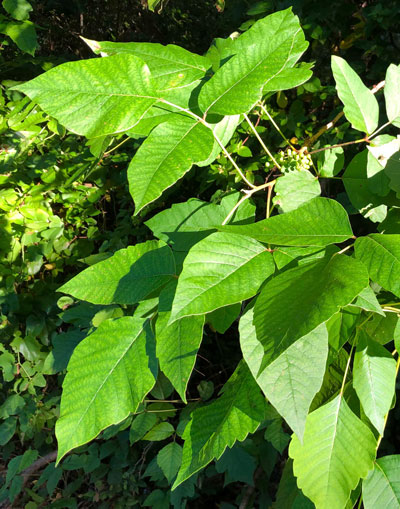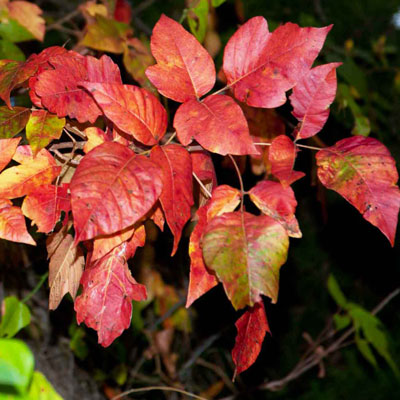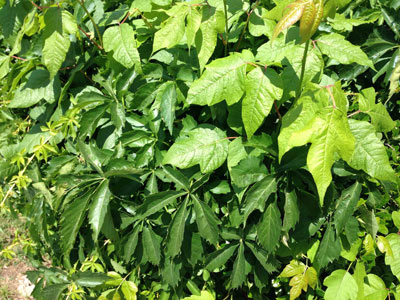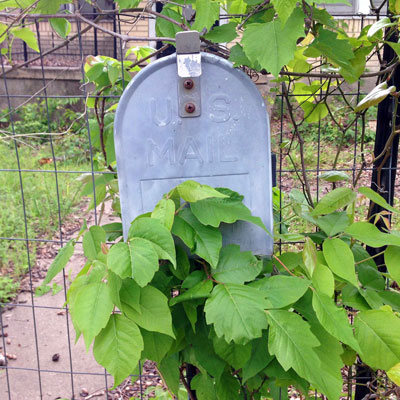Poison Ivy Pointers
When I was teaching in a vocational high school in Shelby, Ohio, I had a student named Eddie. Every teacher has an “Eddie.” He was the class clown, always out to prove a point. Eddie was sure that he was immune to poison ivy. So much so that before I could stop him, he wadded a bunch up and started to chew on it. We didn’t see Eddie for a while.

And on to another story. A friend at work was telling me about a farm he and his wife had bought as an investment. He was from a city way north, almost in Canada. He had been out working on his farm one day in late May.
“Neil, I have a really embarrassing question to ask you. Will that be OK?”
Not knowing what might be coming, I said, “Sure. What’s the problem?”
“We were out at the farm this weekend, and I have a really bad case of poison ivy. But I don’t understand how I could have gotten it. It’s on my legs and here around my underwear. But I swear I had my jeans and shirt on all the time. It itches so bad….”
“Oh. You’ve never had chiggers, have you?” I asked.
“What’s that?”
And when I explained chiggers to him, it was as if I’d taken the weight of the world off his shoulders.
Back to Eddie’s least-favorite salad green…
Poison ivy might as well be the State Vine of Texas. It grows prolifically across the eastern 40 percent of our state. It’s actually a very handsome vine, but it brings some very bad manners to our relationships with it.

Rather than rambling on any longer, I’ve assembled important facts on this plant.
Things you need to know about poison ivy…
• It is the oil in the plant tissues that causes the allergic reaction.
• All parts of the plant contain that oil, even the stems, seeds and roots. Even fumes from the smoke of burning the rubble. You can easily get it off clothes that have touched it.
• Everyone is susceptible to it at some point.
• You can spread the irritation by scratching it.
• Each poison ivy leaf, as you see in my photo, is made up of three leaflets, hence the old saying, “Leaves of 3, let it be.”
• Even young seedlings, as they sprout up in beds, have three leaflets, so it’s always easily identified.

• Poison ivy is often confused with Virginia creeper, but that plant has five leaflets per leaf.
• Poison ivy is a vine, but it can also rise upright to 24 or 30 inches in fields where there are no supports.
• We do not have poison oak or poison sumac in Texas. Poison ivy is our lone member of these closely related species.
How to control poison ivy…
• If you are highly allergic, perhaps someone who is less so can do all of this work for you.
• Broadleafed weedkiller sprays containing 2,4-D will kill the vines while they are growing actively like the ones in my photos (May and June). Read and follow label directions carefully to avoid damage to nearby trees, shrubs, groundcovers and other garden plants. There are many brands on the market. I prefer not to single out specific ones.
• When it is climbing trees’ trunks, use a long-handled axe to sever the poison ivy trunks. Leave the vines in place in the trees. The leaves will turn brown, but the vines’ tops will die. Gradually the stems will release and fall from the branches and drop to the ground. Pick them up with a shovel or pitchfork. Do not touch them.
• To keep the stumps of the severed vines from sprouting back, cut a section out of the vine. Macerate the stump with your axe. Pour the broadleafed weedkiller at full strength to soak into the pulverized wood. Do not allow it to run out onto the ground.

